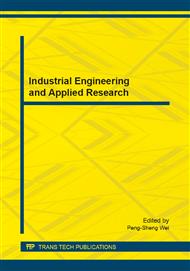[1]
C. Donik, A. Kocijan, D. Mandrino, I. Paulin, M. Jenko, B. Pihlar, Initial Oxidation of Duplex Stainless Steel, Appl. Surf. Sci. 255 (2009) 7056-7061.
DOI: 10.1016/j.apsusc.2009.03.041
Google Scholar
[2]
J.N. Waklyn, The role of molybdenum in the crevice corrosion of stainless steels, Corros. Sci. 21 (1981) 211–225.
Google Scholar
[3]
A. Ihrzo, Y. Segui, N. Bui, F. Dabosi, On the conduction mechanisms of passive films on molybdenum-containing stainless steel, Corrosion 42 (1986) 141–146.
DOI: 10.5006/1.3584893
Google Scholar
[4]
F. Falkenberg, I. Olefjord, Passivation of stainless steels in hydrochloric acid, J. Electrochem. Soc. 146 (1999) 1397–1406.
DOI: 10.1149/1.1391777
Google Scholar
[5]
S. Virtanen, W.J. Tobler, in: P. Schmuki, D.J. Lockwood, Y. Ogata, H.S. Isaacs (Eds. ), Pits and Pores: Formation, Properties and Significance for Advanced Materials, PV 2000-25, The Electrochemical Society Proceedings, Pennington, NJ, (2000).
Google Scholar
[6]
G.O. Ilevbare, G.T. Burstein, The role of alloyed molybdenum in the inhibition of pitting corrosion in stainless steels, Corros. Sci. 43 (2001) 485–513.
DOI: 10.1016/s0010-938x(00)00086-x
Google Scholar
[7]
A. Schneider, D. Kuron, S. Hofman, R. Kirchheim, AES analysis of pits and passive films formed on Fe–Cr, Fe–Mo and Fe–Cr–Mo alloys, Corros. Sci. 31(1990) 191–196.
DOI: 10.1016/0010-938x(90)90107-g
Google Scholar
[8]
L. Wegrelius, I. Olefjord, Dissolution and passivation of stainless steels exposed to hydrocholic acid, Master. Sci. Forum 195-199 (1995) 347-356.
DOI: 10.4028/www.scientific.net/msf.185-188.347
Google Scholar
[9]
H. Ogawa, H. Omata, I. Itoh, H. Okada, Auger electron spectroscopic and electrochemical analysis of the effect of alloying elements on the passivation behavior of stainless steels, Corrosion 34 (1978) 52-60.
DOI: 10.5006/0010-9312-34.2.52
Google Scholar
[10]
D.W. Yun, H.S. Seo, J.H. Jun, J.M. Lee, K.Y. Kim, Molybdenum effect on oxidation resistance and electric conduction of ferritic stainless steel for SOFC interconnect, Int. J. Hydrogen Energy 37 (2012) 10328-10336.
DOI: 10.1016/j.ijhydene.2012.04.013
Google Scholar
[11]
D.W. Yun, H.S. Seo, J.H. Jun, J.M. Lee, D.H. Kim, K.Y. Kim, Oxide modification by chi phase formed on oxide/metal interface of Fe-22Cr-0. 5Mn ferritic stainless steel for SOFC interconnect, Int. J. Hydrogen Energy 36 (2011) 5595-5603.
DOI: 10.1016/j.ijhydene.2011.01.136
Google Scholar
[12]
Kofstad Per. High temperature corrosion. 1st ed. New York: Elsevier Applied Science; (1988).
Google Scholar


